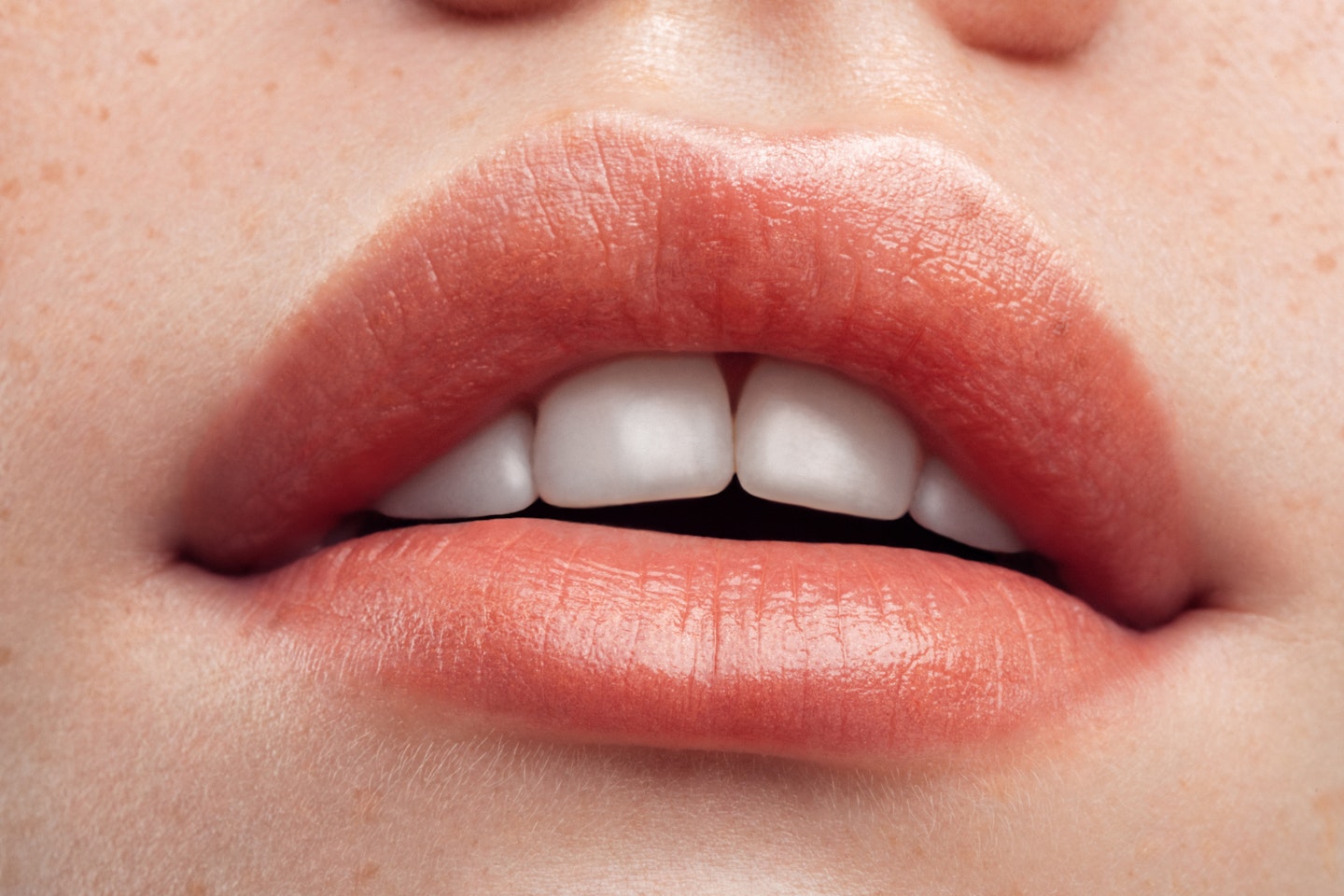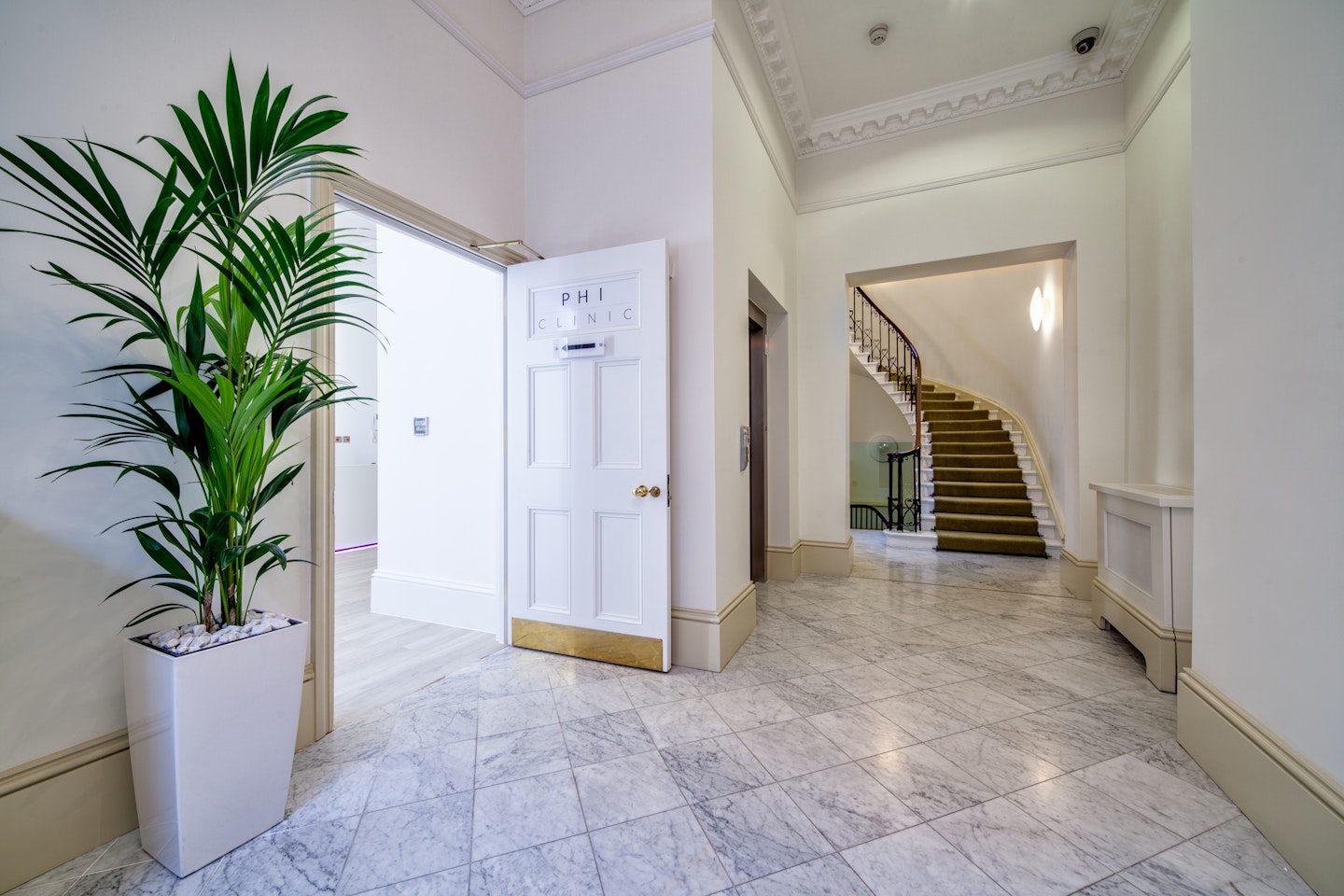Words: Lotte Jeffs
Most women (54%) who Grazia surveyed felt their interest in cosmetic procedures had piqued post-pandemic, but while Zoom has a lot to answer for, it can’t be the only reason we are so busy booking Botox, fillers and eye lifts (the three most coveted treatments).
I've been driven by a commitment to self-care. So much has proved outside of my control recently, I’m finding joy in the small decisions that make me feel that I have some agency in the world, even if that world is a dystopian hellmouth. It’s why I booked to see consultant dermatologst Dr Alexis Granite at Skinesis in London. I turn 40 in a few months, but I’ve wanted to fix my frown lines since they first emerged around my 30th birthday. They make me look more serious and intense than I am and they bother me. Contrary to popular belief about ‘pushy’ cosmetic doctors, Dr Granite insists we take it slowly and what effect Botox has before considering filler.
It has surprised some people to learn that I’ve had Botox in the past, but I wonder what this incredulous response really suggests. That as a writer I'm too intelligent to want to enhance my face? That being queer I’m not hetero enough to need to? Does being a parent mean I should be more sensible? Is it the fact that I wear little makeup?
‘You don’t seem like the type’ a colleague once said when I confessed that I’d popped out for a lunch time injectable. I’d have raised an eyebrow if I could. Because to imagine there is only one kind of person who has such treatments is reductive. I know of academics, doctors, artists and social workers who have dabbled. Dr Granite says, ‘People try tweakments for many different reasons. Most patients are looking for a little refresh to actually feel more like themselves. Someone might come in with frown lines and say people think I'm angry but I'm not!’
Some people come in with frown lines and say, 'people think I'm angry, but I'm not'
And yet, there remains a veil of shame around cosmetic procedures because we’re supposed to love our flaws. So we don’t talk about it, which leads to the fact that 78% of us find the plethora of treatments on offer overwhelming and confusing. And 70% of us wouldn’t know where to go for information.
Instead of creating an unnecessary moral dilemma out of aesthetic treatments, we need to focus on sharing accurate information so that people can make empowered choices. I’m all for more Marc Jacobs-like honesty, too. The designer shared a photo of his head wrapped in bandages after his face lift operation last year, with the caption ‘#LiveLoveLift’.
As I lie on Dr. Granite’s couch, I consider how it’s perfectly possible to believe that ‘anti-ageing’ is a myth, to be a feminist and still desire a few facial tweakments – we are multi-faceted humans capable of holding many different ideas in our heads at any one time, after all. Though that may be how I got these frown lines in the first place...

Words: Cassie Steer
Know Your Terminology
Collagen – A structural protein found in the body, it forms the building blocks of skin, giving that youthful ‘bounce’. We lose collagen with age, so skin can start to sag.
‘Botox’ – The brand name for the commercial form of Botulinum Toxin A. A neurotoxin produced by the bacterium clostridium botulinum, it blocks chemical signals from our nerves telling our muscles to contract so that they stay relaxed.
‘Fillers’ – Substances injected into the skin to provide volume, structure or hydration. Most are now made up of hyaluronic acid, which is generally a well-tolerated option.
‘Lasers’ – These are either ablative (which target the top layer of skin) and non-ablative (penetrating beneath the skin, leaving the surface intact). Fractional laser treatments bridge the gap between the two. All essentially create beams of thermal energy to stimulate the body’s own healing process in order to encourage collagen production and cell regeneration.
Microneedling – aka dermarolling or collagen induction therapy; the puncturing of the skin with very fine, sterile needles to prompt the natural healing process.
Radiofrequency – Electromagnetic waves heat the deeper layer of the skin (known as the ‘dermis’) to stimulate collagen production for a tightening and lifting effect.
PRP – AKA Vampire facial; a patient's own blood is put in a centrifuge to separate out the components and create a platelet-rich plasma. This is injected into a target area to promote healing. Used to treat everything from skin rejuvenation to thinning hair.
Everything to know about... Lip Filler
Lip fillers were the number one requested treatment at The Taktouk Clinic in Knightsbridge last year for women, and the third most popular treatment for men. They have come a long way since the risky procedures that gave rise to the ‘trout pout’ phenomenon.
For a reversible solution, opt for a hyaluronic acid-based dermal filler. Dr Steven Harris’ Non-Surgical Lip Lift is widely known as one of the most natural-looking treatments.
Known as the ‘Michaelangelo of mouths’, Dr Harris uses tiny amounts of precision-placed Juvederm filler (one of the most widely used brands of filler), working with the natural structure of lips and avoiding the delicate edge, which could otherwise lead to that tell-tale ledge. While the technique doesn’t actually ‘lift’ the lips, the fine-tuning of the shape means they appear more pillowy, with subtle volume and very little swelling.
For a needle-free option, Dr Munir Somji at drmedispa.com suggests the Laser Lip Lift. Using fractional CO2 energy, the treatment helps to revitalise the lip surface while also offering subtle plumping.
Ouch factor: 4/10 for the Non Surgical Lip Lift (the filler contains anaesthetic). The Laser Lip Lift feels hot and prickly and there will be some temporary swelling but pain-wise is said to be around 2/10.
Longevity: The Non-Surgical Lip Lift typically last up to a year. The Laser Lip Lift takes six weeks to take full effect (the time it takes for collagen to flourish) and the results last nine to 18 months.
Cost: £350 for the Non-Surgical Lip Lift; £200 for the Laser Lip Lift (or £950 for a course of six).

Everything to know about... Jawline Tweakments
Whilst jowls and double chins may have traditionally been treated with filler added to the corners of the jaw to give a more chiselled profile, renowned aesthetic physician Dr Wassim Taktouk points out that this can make the face squarer front-on, while neglecting pockets of fat underneath the chin. For this, Dr Taktouk recommends Belkyra – the latest innovation from Allergan (the makers of Botox) which creates a sharper silhouette.
Specifically developed for ‘chin strap fat’, it uses deoxycholic acid (a molecule in our bodies that aids the breakdown and absorption of dietary fat) to permanently remove fat cells by breaking down the cell membrane. Taking a bespoke approach, Dr Taktouk aims to use a light touch of well-placed filler.
Alternatively, Dr Sophie Shotter’s Tri-Lift aims to enhance jawline contours. The treatment uses Profound, a radio frequency micro-needling device that delivers energy deep into skin tissue for double the amount of collagen activation. A small amount of filler can also be administered 2-4 weeks later to add definition
Ouch factor: For Belkyra it's a 3/10, but expect to be a bit swollen and tender for a few days. For the Tri-Lift, it's around a 2/10, although there may be some bruising.
Longevity: Belkyra is considered a permanent treatment. Tri-Lift produces a difference after six weeks with peak results after six months and lasts up to three years.
Cost: Belkyra stars from £800 per session, Tri-Lift from £2,800.
Everything to know about... Eye Tweakments
We’re all just so… tired. So perhaps we shouldn't be surprised that aesthetic doctors like Dr Bibi Ghalaie have seen a huge surge in requests for eye rejuvenation. Dr Bibi's signature eye rejuvenation treatment, Nova Oculus, was created to fill hollows and promises to lend eyes that elusive look of having had eight hours' sleep. The treatment uses Teoxane’s Redensity 2 dermal filler, which contains hyaluronic acid and a bespoke mineral complex to volumise tear-trough hollows (sunken creases under the eyes) while repairing the quality of the under-eye skin.
Though not designed as a pigmentation treatment, Dr Bibi reports that there is often a brightening effect. Combined with some strategic filler in the mid-cheek area to support the under-eye region, the aim is that patients will walk out looking more rested.
For targeting under eye bags, aesthetic ophthalmic plastic reconstructive surgeon Dr Sabrina Shah-Desai (www.perfecteyesltd.com) recommends Endolift Laser. The peri-orbital specialist directs the non-surgical laser beam via specific single-use micro-optical fibres to melt the under-eye fat pads whilst simultaneously revving up collagen production. Dr Sabrina reports an 80% improvement in her patients.
Ouch factor: Thanks to the numbing cream applied in advance, pain for Nova Oculus is kept to a respectable 2/10, with the whole procedure being performed with a blunt cannula through one single tiny needle puncture at the beginning of the cheek, which normally mains a day or so of downtime.
Depending on where its performed, Endolift generally requires more recovery time and can be a little uncomfortable but, for this procedure under the eyes, Dr Shah-Desai assures that apart from a few days of swelling, most patients report that pain is around 2/10 after the anaesthetic cream has been applied.
Longevity**:** Both treatments require a single session, with Nova Oculus lasting 18-22 months and Endolift up to two years, although there is no longevity data yet for the under-eye area.
Cost: Nova Oculus is from £70 and Endolift from £1,000.
Everything to know about...Brow Tweakments
As the erogenous zone of Gen Z, it was only a matter of time before brows entered the aesthetic arena. But whilst Instagram discover pages are littered with the rather more extreme ‘Fox Eye’ look, there are many treatments that focus simply on a ‘well rested’ result.
What used to be left to Botox is now a far more nuanced affair. For anything to do with eyes, oculoplastic surgeon Dr Maryam Zamani is globally recognised as the person to see. Her Tri-Brow Lift uses Ultherapy (a type of ultrasound) to lift and tighten, Nd
For those of us who want a little extra attention, Dr Pamela Benito’s LightLift treatment combines thread lifting with fillers. ‘Threads are inserted under the skin to lift. The threads' bio-stimulating increases collagen synthesis alongside Ellanse - a collagen-stimulating dermal filler used to rebuild volume.
Ouch factor: Dr Zamani describes the pain associated with her Tri-Brow Lift as ‘mild to moderate’ (3/10). LightLift is a 0-3 during the procedure but downtime may include bruising.
Longevity: Results for the Tri-Brow Lift last around a year but the Botox will need topping up every 4 months. With LightLift, results are at their optimum after 3 months and last nine to 18 months.
Cost: Tri-Brow Lift is £2000 while LightLift starts from £4295.
Everything to know about... Achieving a Glow
‘A trend in the last few months is patients wanting healthy-looking skin, regardless of lines and wrinkles,' says cosmetic doctor and surgeon Dr David Jack. First came Profhilo – the ‘injectable skincare’ treatment made up of hyaluronic acid that, after a month or so, promises a glow. But then came something more immediate: Belotero Revive, the only booster to include glycerol, which has an antioxidant and anti-inflammatory effect, as well as skin-plumping hyaluronic acid promising a firmer, more hydrated complexion.
To address pigmentation and open pores, Dr Jonquille Chantrey at One Aesthetics Studio recommends skin-resurfacing ReSurFX, a non-ablative laser (one that doesn’t harm the surface of the skin). Aquagold Microinfusion Facial (aka the ‘Glass Skin Facial’) with Dr Vicky Dondos at Medicetics, combines a cocktail of dilute Botox, micro-droplets of hyaluronic acid filler, such as Belotero Balance to improve radiance, and PRP (the platelet-rich portion of our blood).
Ouch factor: Belotero Revive tends to be injected with a needle and cannula and has a pain score of around 4/10. Downtime is minimal but there is the potential for bruising. ReSurFX is a 5/10. Expect some redness and peeling for the first couple of days. For Aquagold you will see a slight flush afterwards and most report it to be a 1-2/10.
Longevity: Results for Belotero Revive last 6-9 months and patients need between 1-3 sessions a month apart. ReSurFX requires 3-4 sessions and Dr Jonquille recommends a top-up every year. For Aquagold, you see results the next day with more improvement over the following weeks, the effects of which last up to three months.
Cost: Beletoro is £1000 per treatment. ReSurFX starts from £600 and Aquagold starts from £600 for a one-off treatment.
Visit: dralexisgranite.com; oneaestheticstudio.com; medicetics.com.
Everything to know about... Acne Scars
Like ghosts of pimples past, acne scars are reminders of the blemishes we were keen to see the back of at the time. All the more galling is that they are often harder to get rid of than the acne itself and show up under multiple guises, which is why a range of treatments promising solutions has emerged.
Skinpen Precision is essentially microneedling 2.0 (microneedling being a treatment where very fine, sterilised needles are inserted into the skin). Touted as the only microneedling medical device in the world with FDA approval, this activates the skin’s own powers of regeneration as the needles (which leave and enter the skin vertically on every rotation to avoid negative trauma and pain) produce micro-channels to induce healing. We recommend seeing Dr Tapan Patelat the Phi Clinic.
Entering the world of biostimulation (procedures that prompt the body’s own powers of regeneration) is Nucleofill, a new injectable treatment made up of something called polynucleotide-based gel, which stimulates collagen to rejuvenate, firm, moisturise and contour. If you’re keen to try, head to The Lovely Clinic.
For live acne as well as acne scarring, we recommend booking in with Dr Benji Dhillon for Potenza, a device loved by Kim Kardashian et al which combines the best of microneedling and radiofrequency (a non-surgical method of tightening your skin using energy waves). Thanks to its customisable needle tips, which enter the skin at different depths, it can be used on blemishes as well as deep acne scarring.
Ouch factor: 0-4/10 for Skinpen depending on the level of scarring, while Nucleofill is a 5/10. Due to the depth of the needles, Potenza is described as a little more uncomfortable at around 7/10 but most find it bearable, and a topical anaesthetic is applied at the start. You can expect to look sunburnt for a couple of days afterwards.
Longevity: Skinpen can permanently reduce scars over 3-6 sessions, although maintenance treatments may be needed in the future as collagen degradation due to ageing tends to be more obvious in scars. Results for Nucelofill can be seen after a week and last 6 months. Two treatments are needed with two to four weeks between each session. With Potenza, 3-4 sessions are recommended, depending on the depth of the scars with the full effect evident after 3 months and results lasting around a year.
Cost: Skinpen starts from £350, Potenza comes in at £750 per session and Nucleofill is £445.
Visit: phiclinic.com; thelovelyclinic.co.uk; defineclinic.com.

Everything to know about... Nose Tweakments
‘Tinkerbell tips’ may be trending on Instagram but the reality - liquid rhinoplasty or non-surgical nose job - is not a procedure that should be taken lightly and choosing the right practitioner is paramount.Dr Ifeoma Ejikeme of Adonia Medical Clinic is one of only a handful of doctors in the UK to gain a masters in aesthetic medicine and whose research into the safest ways to inject the nose now forms part of the curriculum at Queen Mary University.
According to Dr Ejikeme, people are looking for bumps in the nasal bridge to be filled and for the nose to look narrower, although she warns against the plethora of treatments seen offering straighter-than-straight noses.
Renowned cosmetic doctor Dr Maurice Dray explains that whilst some doctors will use Botox to narrow a nostril flare or even PDO threads (common in Korea but thankfully not over here due to the trauma it causes to the nose and the artificial-looking outcome) the most requested, and safest, option is still the so-called ‘liquid nose job’. ‘We inject microdroplets of hyaluronic acid-based filler rather than a larger quantity and find it’s best to mix different techniques between using a cannula and needle,’ explains Dr Dray, noting that newer hyaluronic acid-based fillers are stiffer in consistency and draw in less water for longer-lasting results. It’s also worth noting that there are certain things that can’t be achieved with dermal fillers and the best candidates are those looking to ‘address a bump or a droopy tip’.
Ouch factor: 2/10. As the filler already has a numbing effect no additional anaesthetic is needed.
Longevity: From 8-24 months
Cost: £600
Visit: adoniamedicalclinic.co.uk; drdray.co.uk.
Everything to know about... A Lift
Whilst many may associate filler with a plumper pout, in the expert hands of cosmetic doctor Darren McKeown it’s also used for his Volumetric Face Lift, to treat jowls and hone the whole structure of the face. Dr McKeown notes that as we age, we lose fat in front of the ears and from the vertical height of the jaw, so this treatment creates a new framework by administering filler to these areas.
For tightening and lifting without needles, Ultherapy is widely known as the gold standard treatment. Available at The Cosmetic Skin Clinic (the number one Ultherapy Premier treatment provider for the UK and Ireland) the treatment uses micro-focused ultrasound technology (which sends ultrasound waves deep into the skin) to create a thermal effect under the skin in order to kick-start the body’s repair process and boost collagen production for a lift that couldn’t be further from the surgical ‘wind-tunnel’ effects of yore.
'Flicking the switch back on to collagen production is a game-changer,' says Dr Johanna Ward of The Cosmetic Skin Clinic. 'Combining skin tightening and lifting treatments like Ultherapy with dermal fillers to underpin the structure of the face is the key to a subtle refresh.'
Ouch factor: 2/10 for the Volumetric Facelift as the fillers contain local anaesthetic. With Ultherapy there can be a little discomfort; around a 4/10 (think tiny elastic bands being snapped against your skin).
Longevity: Around 18 months for the Volumetric Face Lift and a year to 18 months for Ultherapy.
Cost: The Volumetric Face Lift starts at £2400 and for Ultherapy starts at £500.
Everything you need to know about... Jawline Treatments
Dr Dil Kassam is one of the few practitioners to offer Evoke - a revolutionary treatment using thermal radio frequency energy to penetrate the skin and regenerate new collagen. Dil says ‘Evoke is the first-ever facial remodeling device to tighten, rejuvenate, and slenderise the tissues of the lower face and neck. It can be used on any skintype/tone/colour, unlike lasers, which is great as there won't be any pigmentation issues for patients.
Using only a headset, Evoke deploys proven bipolar radiofrequency energy to the cheeks, jowls, submental area (under the chin), and jawline. With its ability to maintain a constant temperature, Evoke remodels the dermis and subdermal tissue to deliver more defined facial characteristics.
Ouch factor: 2/10 Dr Dil says 'it’s more like the feeling of a hot stone massage - and actually very relaxing. You can use the treatment for some downtime - read a book, catch up on your Netflix backlog or listen to some dreamy Harry Styles'.
Longevity: EVOKE is developing your collagen which is a protein that naturally diminishes as you age. Results keep getting better within 3-6 months after the course, so this is a treatment that constantly builds and improves.
Cost: Sessions start at £600. Six week course is recommended. Peak results after 3 Months. Maintenance once every 6-12 months.
Everything to know about...Pelvic Floor Treatments
The pelvic floor is a very difficult muscle to train. Can you do 11,200 kegel exercises in 28 minutes? Look no further than the Emsella Chair - which uses high-intensity focused electromagnetic energy to stimulate muscle contractions. Dr Dil Kassam says 'this is a great option for women of any age who desire a non-invasive solution for urinary incontinence and improvement in the quality of their sex life (due to factors such as the body’s normal ageing, childbirth or menopause).This high-intensity focused electromagnetic (HIFEM) technology treats stress urine incontinence, in addition to other pelvic floor related disorders'.
Ouch factor: 1/10 It’s a funny tingly sensation (actually quite a nice one!) handsfree, non invasive and you remain fully clothed.
Longevity: Typical treatment takes about 30 minutes and you will need about 6 sessions, scheduled twice a week. 95% patient satisfaction has been reported. Maintenance varies from person to person, but you may not need any for a long time.
READ MORE: Millie Mackintosh Reveals The £25 C-Section Scar Cream She Swears By
READ MORE: Molly-Mae Hague: 'I Feel The Prettiest I've Ever Felt Now They're All Gone'
